Clarity unveil: Astigmatism correction at the time of cataract surgery
In the realm of vision restoration, cataract surgery stands as a transformative procedure. However, for individuals with astigmatism, an additional layer of visual complexity often persists. Fortunately, modern advancements in ophthalmic technology have paved the way for simultaneous astigmatism correction during cataract surgery, offering patients a comprehensive solution to reclaim visual clarity.
Astigmatism, characterized by distorted or blurred vision due to irregularities in the cornea or lens curvature, can coexist with cataracts, Addressing both concerns concurrently has become a standard practice in the evolving landscape of eye care.
These options include the use of femtosecond laser technology, toric intraocular implants, light adjustable lens techniques, pinhole implants and surgery on the pupil (pupilloplasty).
One key consideration in managing astigmatism during cataract surgery is the threshold for correction.
One of the techniques that has gained popularity in recent years is femtosecond laser technology. Femtosecond laser technology offers precise and customizable corneal incisions, which can help correct astigmatism during cataract surgery.
The key advantage of femtosecond laser technology lies in its accuracy and reproducibility. Surgeons can plan and execute precise corneal incisions tailored to the specific needs of each patient. This level of customization allows for optimal astigmatism correction while minimizing the potential for human error.
Toric intraocular implants represent another powerful option for astigmatism management during cataract surgery. These specialized lenses are designed to correct both cataracts and astigmatism simultaneously. The toric lens is strategically positioned to counteract the astigmatic distortions, providing patients with improved visual acuity without the need for additional corrective measures like glasses or contact lenses.
Light Adjustable lens technology introduced a dynamic element to cataract surgery, allowing for postoperative fine-tuning of the lens power. This adaptability is particularly valuable in addressing any residual astigmatism or changes in vision that may occur over time. It offers a level of flexibility that enhances the precision of astigmatism correction.
Intraocular implants and pupil surgery (pupilloplasty)
Pinhole intraocular implants and pupil surgery (pupilloplasty) add unique dimensions to the arsenal of astigmatism correction options during cataract surgery. Pupilloplasty focuses on modifying the pupil’s size and shape, influencing the way light enters the eye to mitigate astigmatism. Pinhole implants, on the other hand, leverage the physics of light through a small aperture to sharpen and refine visual perception.
When considering astigmatism correction during cataract surgery, it’s crucial to determine the appropriate threshold for correction based on the individual patient’s needs and lifestyle. The choice of technique or technology should align with the patient’s astigmatism type and amount , surgeons’ skills and desired visual outcomes.
In conclusion, cataract surgery is evolving with various options for astigmatism correction. These include femtosecond laser technology and innovative implantable devices. Successful management depends on careful consideration of each patient’s factors. Selecting the most suitable approach ensures the best visual outcomes.
Dr Romero at Precision Eye Care offers a personalized and nuanced approach to astigmatism correction at the time of cataract surgery.
Make an appointment with Dr. Romero to learn about this pathology.







